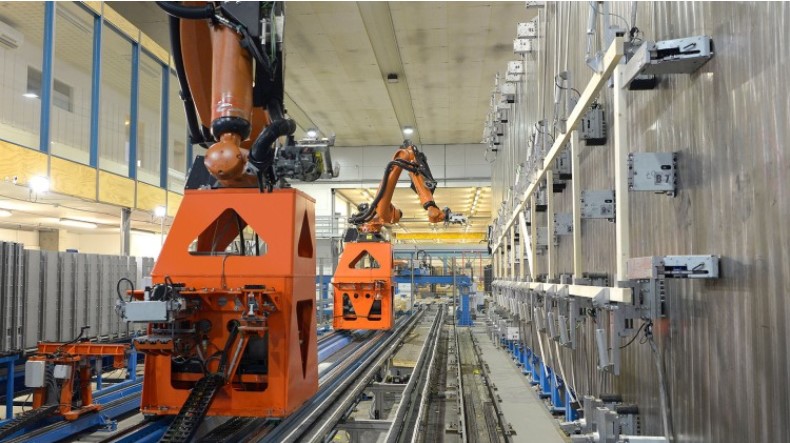Is Robotic Truss Manufacturing More Widespread than Previously Thought?
Originally Published by: Misura Group — October 2, 2023
SBCA appreciates your input; please email us if you have any comments or corrections to this article.
Several men flew from far-away Finland to the Midwest last week to show attendees at the Building Component Manufacturers Conference something wildly futuristic: A robotic truss machine requiring just one operator for two production tables. Their booth and pitch were much the same as in past years, and the response again was skeptical. But those Finns knew something about their machines that they weren’t making public.

Back in 2018, when many LBM leaders' idea of robotics stretched only to the Roomba vacuum, Menard's Midwest Manufacturing division started acquiring these cutting-edge Trussmatic systems. Menards now has 12 of them, churning out trusses to support its 336 big box stores from Wisconsin to Wyoming to West Virginia. I was shocked to hear they installed their 13th Trussmatic system in Sarasota, FL, 900 miles from their nearest store. It will be in full production November of 2023.
“Loose Lips Sink Ships”
Why haven’t we heard of this? Because Menards President John Menard Jr. now owns 51% of Trussmatic’s parent company, and he’s using that majority stake to pressure Trussmatic’s leaders to keep his ownership and 13 units a secret so he can gain ground on competitors. That may help explain why Trussmatic’s booth at BCMC was so modest.
Menards is notorious for maintaining the highest level of secrecy. It doesn't reveal its revenues, but Forbes estimates they're $13 billion, making the dealer America’s 28th-biggest private company. I'm told Menards generates roughly $200 million of that revenue from truss sales, approximately 60% of which are special orders. That’s impressive penetration into the pro market for a company widely regarded as a home center. And while much of that revenue comes from the Trussmatic machines, Menards is so busy that it also continues to use its now old-fashioned MiTek automatic puck tables for additional production capacity.
“Does it pencil a profit?”
John Menard also has a reputation for being tight with a dollar and insistent on high ROI, so you can be sure his Finnish robots are money-makers. Their optimized setup has two Trussmatic tables, supported by one Vekta packfeeder, a Vekta turbo drive saw, and a stacker. That setup carries roughly a $9.8m sticker price. But it needs only one person supporting two lines, producing 1,600-2,000 board feet per hour. It's much easier to operate three shifts at high quality when you're employing only a few people per shift.
As a native of Menards' hometown, Eau Claire, WI, and a one-time Menards manager, I will forever treasure my 13 year Menards bootcamp. It was exciting to hear what the company has achieved.
But it turns out there’s another Wisconsin company that also merits watching.
Drexel Building Supply took a leap into robotic truss lines created by House of Design. Drexel’s line involves The Hundegger WodRanger Retrieval System and Hundegger turbo drive, feeding two production tables with conveyors and stackers on the back end. The House of Design system uses flat tables. All told, the CapEx runs about $6.1 million. Drexel’s system needs just six people to produce 2,000 to 2,250 board feet of material per hour. Serving a high-end custom home market, at times, 97% of the trusses it produces are one-offs, as set times are a key factor when comparing them to the Trussmatic line.
Neither system can handle everything: Trussmatic can’t handle members smaller than 11 inches, and House of Design stops when you go below 8 inches. But both can excel at the vast majority of trusses that LBM operations produce and do it faster with fewer errors and fewer personnel than human-centric systems. Re-designing the smaller members out, hand placing them on the House of Design line, or simply manufacturing those trusses on a traditional table are all workarounds.
“It's not faith in technology, its faith in people” – Steve Jobs.
I left BCMC sobered by the realization that automation in component manufacturing is much further along than I thought. It is exciting to be helping innovating industry leaders push truss and component manufacturing past what many thought was possible.
